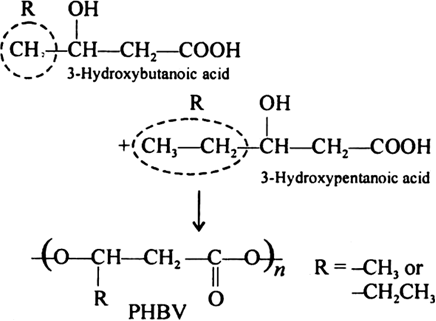 Long Answer Type
Long Answer Type Short Answer Type
Short Answer TypeWrite the name and structure of the monomer of the following polymer ?
Poly-monochlorotrifluoroethene
 Long Answer Type
Long Answer TypeWhat do you mean by bio-degradable polymers? Give some examples.
Most of the synthetic polymers are inert towards the environmental processes, therefore, degradation reactions leading to change in their properties don’t take place. Because of this reason, many serious environmental problems has originated, mainly the disposal problem of polymer waste.
On the other hand, biopolymers like proteins, starch etc. are degraded easily by enzymatic hydrolysis or by oxidation in biological systems. Therefore, the synthetic polymers having functional groups prevalent in biopolymers and lipids can also be biodegradable. For example, aliphatic polyesters are biodegradable polymers.
Some important biodegradable polymers are: (i) Poly lactic acid and poly glycolic acid: Suture polymers belong to this class. Dextron is a bioabsorbable suture which is made from biodegradable.polyesters for post-operative stitches.
(ii) Polyhydroxybutyrate-co-β-Hydroxyva-lerate (PHBV): PHVB is a copolymer of 3-Hydroxybutanoic acid and 3-Hydroxypentanoic acid, in which these two acid units (monomers) are attached by ester linkages.
3-Hydroxybutanoic acid provides stiffness (chloroprene) and 3-Hydroxypentanoic acid gives flexibility to PHBV, therefore, the properties of this polymer depend upon the molar ratio of these acids in synthesis. PHBV is used in orthopaedic devices and in controlled drug release. In environment it undergoes bacterial degradation.
(iii) Nylon-2-nylon-6 is also a biodegradable polymer. It is an alternative polyamide copolymer, made up of glycine and amino caproic acid.
 Fill In the Blanks
Fill In the Blanks